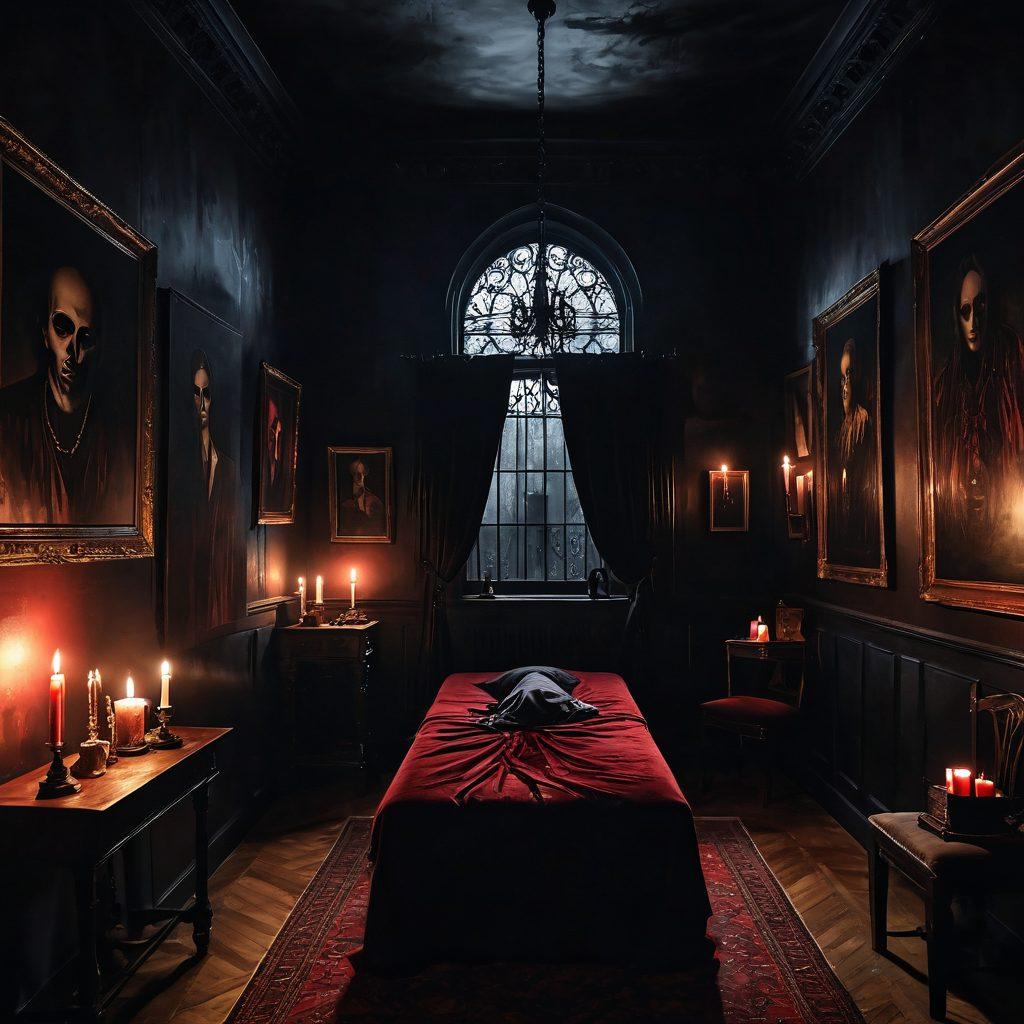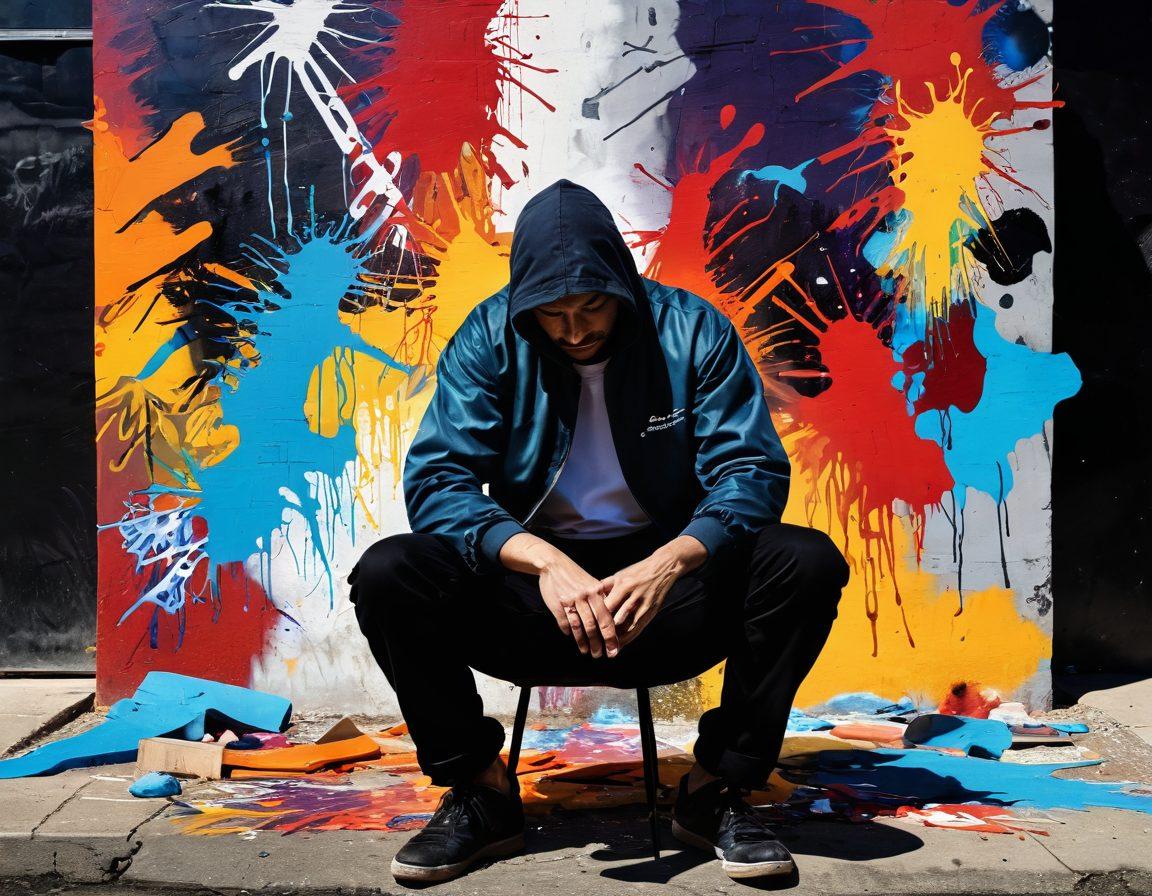Exploring the Macabre: Unveiling the Dark Aesthetics of Torture Art and Its Impact on Creative Expression
In the shadowy realm of artistic exploration, where pain meets beauty, lies a fascinating and often misunderstood genre known as torture art. This dark aesthetic transcends mere imagery; it evokes visceral reactions and challenges viewers to grapple with the uncomfortable feelings it elicits. Imagine walking into a gallery filled with haunting visuals and disturbing concepts that make you question your own perceptions of creativity. It’s here, at the intersection of torture art and surreal aesthetics, that we find a profound exploration of human experience—one that treads the line between fascination and horror, making it an evocative subject for both artists and viewers alike.
What is it about the macabre that draws us in? Perhaps it’s the thrill of the forbidden, the allure of dark creativity that has permeated artistic expression throughout history. From the gruesome tales etched in the ancient myths to the contemporary experimental art that embraces shock value, the theme of pain artistry resonates through various mediums. Consider Surrealism, a movement that wove bizarre imagery into a tapestry of dreams and nightmares. The surreal artists of the past pushed boundaries, utilizing unsettling visuals to convey truth in a twisted way; they dared to ask, 'What if reality is but a reflection of our darkest fears?'.
In contemporary art, these themes have evolved. With the rise of online art platforms and an increasingly interconnected art community, the dialogue surrounding avant-garde art and its provocations has intensified. Now, artists collaborate and share their visceral pieces in ways previously unimaginable, allowing for a robust thematic art exploration that includes both the grotesque and the beautiful. Art therapy has emerged as a critical space for healing through creative writing and visual aesthetics, where artistic innovations can sprout from the ashes of pain and suffering. Here, the transformative power of gruesome art becomes a cathartic outlet for both creators and viewers, offering a poignant reminder of our shared humanity amidst anguish.
One can’t help but wonder: How does torturous imagery reflect our societal views on pain, suffering, and even justice? Artists draw upon these dark aesthetics to critique contemporary issues, challenging the norms of artistic techniques and compelling us to reflect on uncomfortable truths. Think about performance artistry, where the physicality of the body becomes a canvas of endurance and expression. These evocative performances raise essential questions about boundaries—those set by society, those we impose on ourselves, and those that art, in its purest form, dares to defy. As art critiques examine these pieces, they participate in a broader conversation about what is deemed acceptable in the sacred spaces of galleries and public installations.
In a world that often shies away from discussing the macabre, the embrace of torture art and surreal aesthetics is vital for growth in artistic endeavors. These powerful representations ignite the imaginations of not just artists but also the collective conscience of society. They inspire artistic collaborations that invite viewers into the murky waters of human experience, prompting us to confront our inner fears and desires. As we navigate these dark themes, we cultivate an appreciation for the diverse spectrum of artistic expression that enriches our lives and challenges our notions of beauty. So, the next time you encounter dark aesthetics in art, ask yourself, 'What stories does this piece tell, and how does it resonate with the world around me?'
From Pain to Expression: How Torture Art Challenges Traditional Artistic Boundaries
Art has always been a mirror to society, and within this reflection lies an entire spectrum of emotions, philosophies, and experiences. At one end, we have the serene landscapes and abstract beauties, but at the other, there’s a shadowy realm where pain meets creativity — torture art. While it may seem unsettling, this dark aesthetics genre serves a purpose that transcends mere shock value. How does the haunting juxtaposition of suffering and artistic expression challenge traditional artistic boundaries? In this exploration, we’ll delve into the depths of pain artistry and its ability to provoke thought and emotion.
Torture art is not just about the gruesome imagery that comprises the work; it is a poignant commentary on the human condition. Once we step into the world of macabre art, we’re confronted with raw feelings of sorrow, anguish, and even societal criticism. The proclamation, 'Art must disturb the comfortable, and comfort the disturbed' rings ever so true in this context. The artists bold enough to tread on this challenging ground often find themselves redefining contemporary art forms. Can art that stems from pain also become a form of healing? This raises rich questions about the intersections of art therapy and artistic expression.
When we think of the darkest corners of visual aesthetics, we cannot ignore the influence of experimental art. Torture art embraces avant-garde techniques, merging visuals with performance artistry to create an experience that’s often unsettling yet captivating. Artists venturing into this territory frequently engage in artistic collaborations, pushing the boundaries of how we perceive creativity. How might the emotional weight of the narratives in torture art impact the observers’ psychological landscape? This thematic art exploration compels us to confront our own fears and the often-taboo subjects we shy away from discussing, leading to profound discussions within the art community.
One of the fascinating aspects of this genre lies in the subtlety of its artistic innovations. From surreal art that distorts reality to create mindfulness around pain, to the expressive natures showcased in the most provocative art, torture art is layered and complex. Pain is a universal experience; thus, tapping into it can resonate deeply with a wide audience. Engaging with gruesome art might challenge us to reflect on our personal experiences with pain and loss. What stories do we bury deep within ourselves, and how can their expression be transformative?
In a world dominated by polished and commercial art, torture art stands as a provocative reminder that the artistic journey can be, and often is, about confronting darkness. It invites us to reconsider our understanding of beauty, allowing the deep emotional responses generated by the work to connect us at a fundamental level. Whether through the grim narratives, haunting visuals, or challenging performance artistry, torture art ignites a discourse that lingers long after the initial viewing. So, the next time you're drawn to a piece that exudes discomfort, ask yourself: Could it be a catalyst for deeper understanding, not just of the art itself, but of the complexities of human experience?
Provocative Visions: The Role of Gruesome Art in Shaping Modern Creative Narratives
In a world where soft pastels and serene landscapes dominate the canvas, one can’t help but ask: what happens when art delves into the depths of darkness? The realm of torture art may seem macabre to some, but its provocative nature holds the power to shape modern creative narratives in ways that are both unsettling and enlightening. By exploring the grotesque, artists challenge societal norms, pushing the boundaries of artistic expression and igniting critical discourse within the art community. What fuels this fascination with dark aesthetics, and how can it inform creative writing and performance artistry?
As we journey deeper into the shadows of art, we encounter visual aesthetics that provoke a visceral response. Gruesome art, with its raw depiction of pain and suffering, begs the question: can the representation of agony serve as a form of catharsis? Pain artistry acts as a mirror reflecting the chaos and brutality of the human experience, encouraging viewers to confront their own emotions. Artists such as Francis Bacon and Cindy Sherman use the anguish of their subjects to evoke feelings that transcend the boundaries of visual appreciation, prompting viewers to connect with their work on a more profound level. Aren’t we all curious about the juxtaposition of beauty and horror?
The themes of experimental art and avant-garde techniques stand at the forefront of this dark exploration. Artists like Damien Hirst and his famous pieces involving preserved animals dance on the edge of acceptance, challenging the narratives of traditional art forms. Their work inspires audiences to rethink the role of art in society and opens avenues for artistic innovations. What if embracing the unconventional could lead to personal reflection, and even healing through art therapy? Each stroke dipped in the ink of tragedy tells a story waiting to be unearthed, echoing the realms of surreal art that captivates and confounds its beholders.
Art creates conversations, and provocative art shapes the narrative. The beauty of themed art exploration lies in its ability to unite diverse voices through artistic collaborations, especially in online art platforms, all while delving into the depth of dark aesthetics. Performance artistry, too, brings gruesome themes to life, inviting audiences to engage with discomfort head-on. The act of witnessing fear manifested through dance or theater serves as a potent reminder of the multiplicity of human experience. What if our discomfort spurred a desire for dialogue rather than avoidance? Thus, the creation of art becomes an act of rebellion and resilience.
As we reflect on the role of torture art in shaping creative narratives, we must acknowledge the duality of its impact. For some, these portrayals evoke fear and misunderstanding, while for others, they serve as a source of inspiration that ignites change and innovation. Art critiques may deride its macabre essence, yet the essence of pain and struggle remains a fundamental aspect of the human condition. So, as we navigate the world of dark aesthetics, let us remember that in the heart of this artistic exploration lies an invitation to unlock our creativity, to confront discomfort, and to engage with the stories that push the human spirit into new and uncharted territories.


